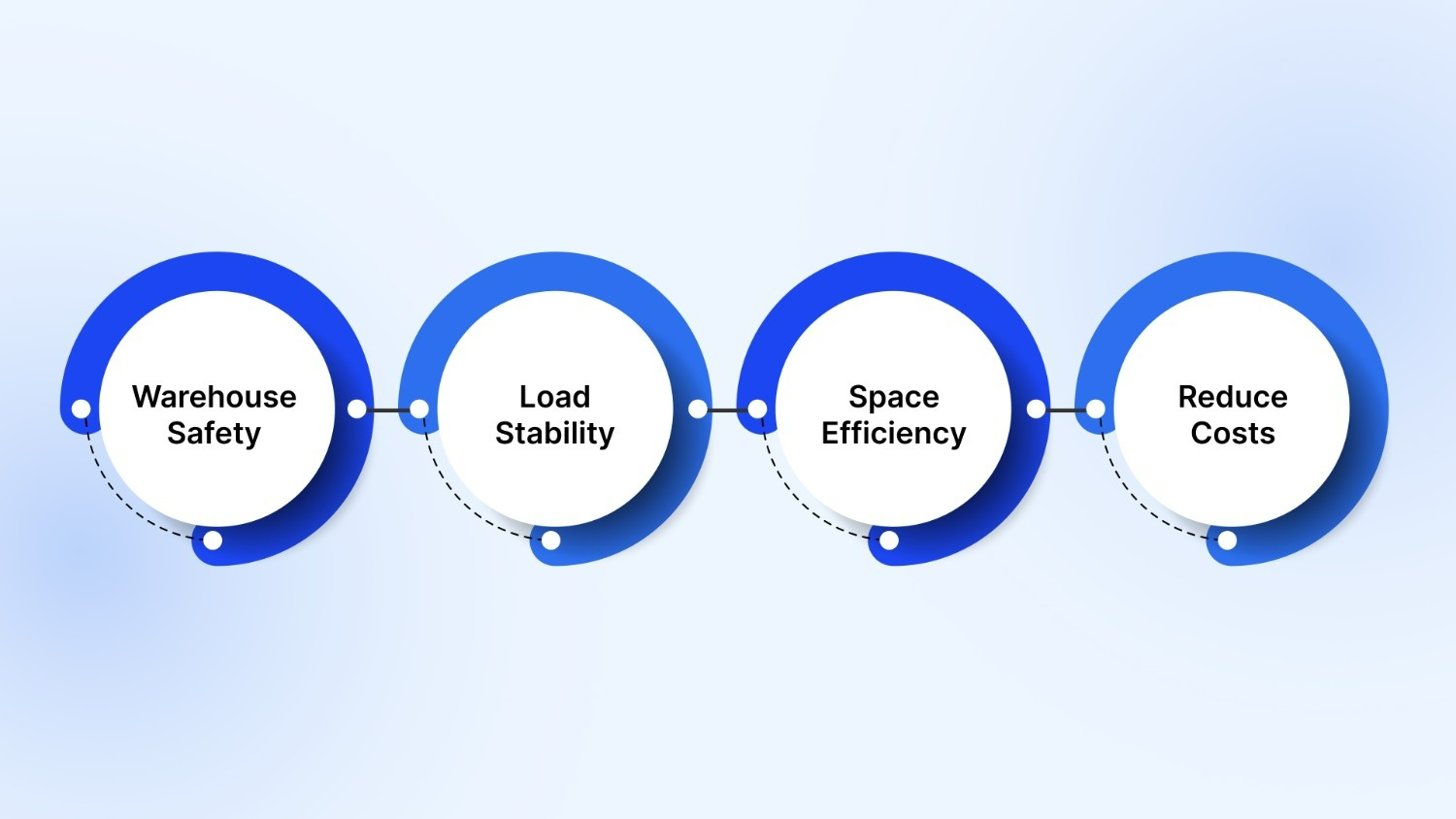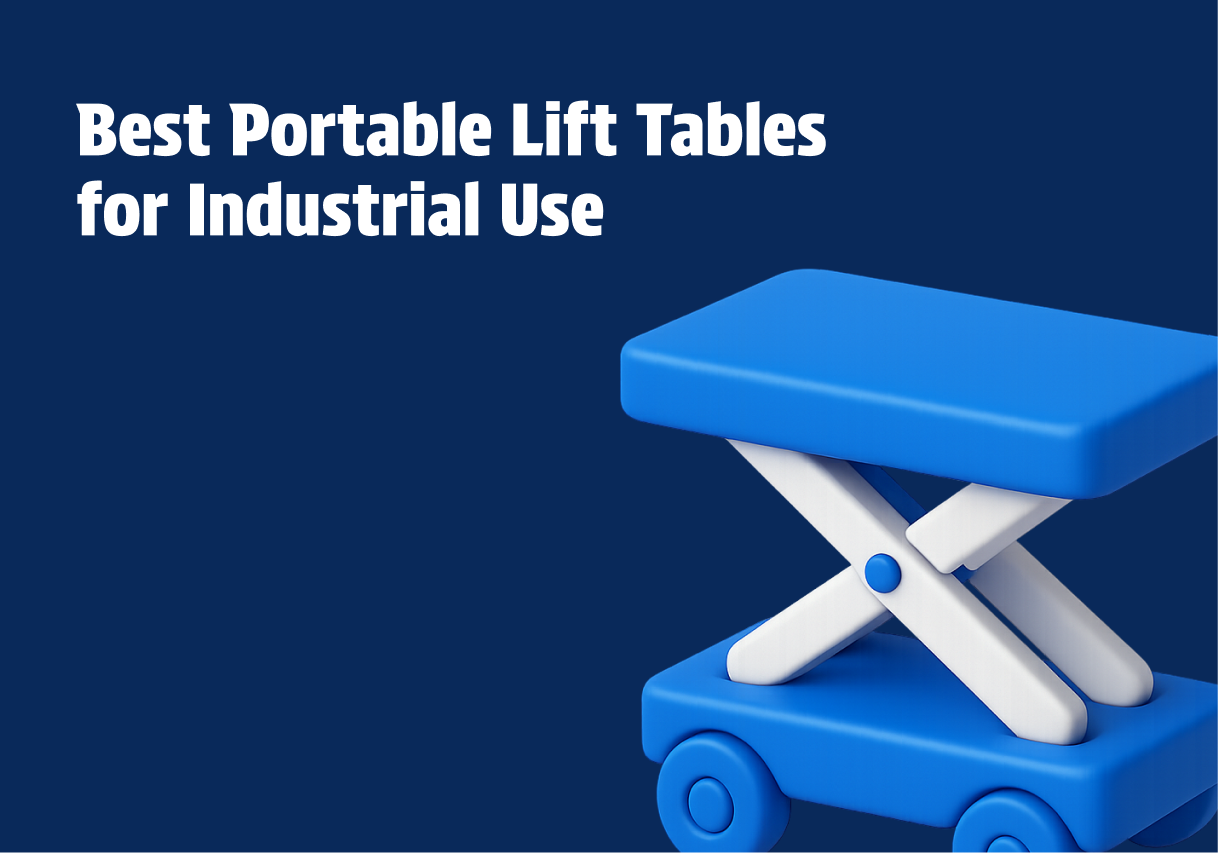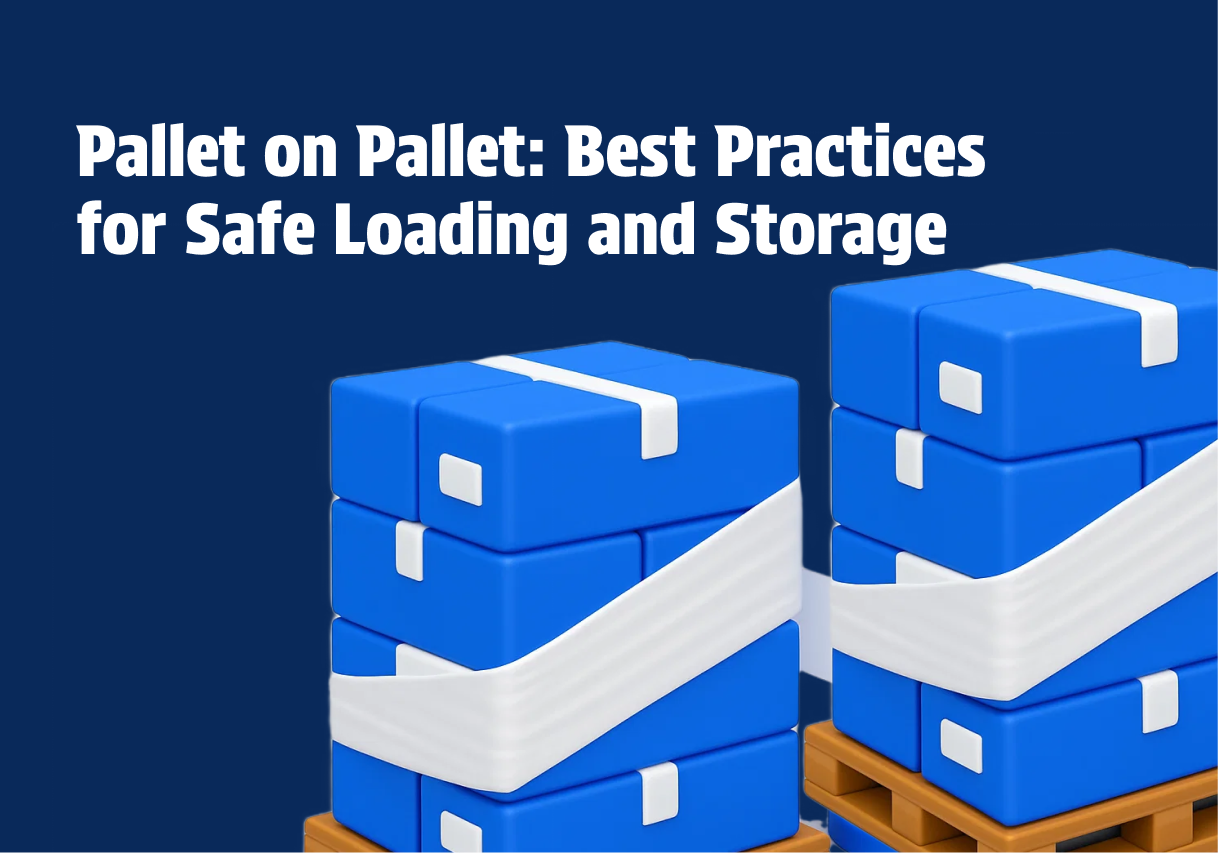When it comes to warehouse operations and shipping logistics, how you stack and store goods can make or break efficiency. Properly managing pallet on pallet loading is not just about saving space—it’s about ensuring product safety, protecting workers, and keeping transport costs under control.
Every year, businesses lose thousands of dollars due to damaged goods and unstable pallet loads. The good news is that with the right pallet loading configuration, supported by modern tools like a palletisation calculator or pallet loading simulation software, companies can improve load stability, maximize storage space, and comply with safety standards.
In this guide, we’ll walk you through the essentials of pallet stacking—from understanding weight distribution and balance to using the correct pallet stacking patterns—so your operation can run more smoothly and cost-effectively.
TL;DR (Key Takeaways)
- Weight distribution is non-negotiable: Always keep heavy items at the bottom and maintain a low center of gravity for stable pallet loads.
- Stacking patterns matter: Use column stacking for strength, interlocking for stability—avoid mixing without reason.
- Height limits save lives: Don’t stack pallets above 60 inches; OSHA requires clearance below sprinklers.
- Damaged pallets = hidden risks: Reusing broken pallets compromises both load integrity and worker safety.
- Tech is your ally: Tools like an online pallet loader or pallet load capacity calculator streamline planning and reduce costly errors.
Why Proper Pallet-on-Pallet Loading Matters

\When it comes to warehouse operations and logistics, pallets are the backbone of material handling. They allow businesses to move bulk products efficiently, store goods in a structured way, and ensure safe transportation across the supply chain. But stacking pallet on pallet isn’t just about saving space—it’s about protecting products, workers, and your bottom line.
Poor pallet stacking can lead to product damage, unstable loads, and workplace injuries, which in turn drive up costs and disrupt operations. Regulatory bodies like OSHA also emphasize proper pallet stacking to reduce risks in warehouses and distribution centers.
By following structured pallet loading practices, businesses can:
- Enhance warehouse safety by minimizing the risk of collapsing stacks
- Improve load stability during transport
- Optimize space efficiency in warehouses and trucks
- Reduce costs associated with damaged goods
Safe pallet loads aren’t just a compliance issue—they’re a strategic advantage for smoother logistics and greater supply chain efficiency.
If you’re new to pallet strategy or want a quick refresher on the big picture, see Palletised Meaning and Benefits in Logistics.
For businesses handling high volumes, safe stacking directly impacts bottom-line savings. Pairing correct pallet practices with quality materials—like stretch wrap or strapping solutions—makes all the difference.
Weight Distribution and Pallet Load Capacity
One of the most important factors in pallet-on-pallet stacking is weight distribution. When loads aren’t balanced correctly, pallets can tip, collapse, or cause accidents during transport. To avoid these risks, companies often rely on tools like a pallet load capacity calculator to determine safe limits for stacking.
Here are some golden rules for proper load distribution:
- Heaviest items at the bottom: Always place bulkier, heavier boxes or containers on the lowest pallet layer. This ensures a low center of gravity, which improves overall stability.
- Even distribution across the pallet: Avoid loading weight unevenly on one side. Lopsided loads can cause pallets to lean or collapse.
- Prevent overhang: Boxes or items that extend beyond the pallet edges reduce stack strength and increase the chance of damage during transit.
- Don’t reuse damaged pallets: Even small cracks, broken boards, or weakened corners can compromise the strength of stacked pallets. Always inspect pallets before loading.
Using digital aids like an online pallet loader or a palletisation calculator can further simplify the process. These tools simulate how products will fit on a pallet, ensuring an efficient and balanced configuration before a single box is lifted.
Before you wrap, make sure your film choice matches the job—our Choosing the Right Stretch Wrap Gauge guide is a great place to start, and you can see equipment options under Pallet Wrapping Equipment (including the 2100-SRT Low-Profile Pallet Wrapper).
Pallet Stacking Patterns and Configurations

Choosing the right pallet loading configuration is crucial for stability, space efficiency, and safe transport. While it may seem as simple as stacking boxes, the way you align items on a pallet determines how well they withstand movement, vibration, and pressure during shipping.
Here are the most common stacking patterns used in warehouses:
1. Column Stacking (Straight Pattern)
- How it works: Boxes are stacked directly on top of each other in straight, vertical columns.
- Best for: Rigid, uniform boxes that won’t crush under pressure.
- Advantages: Maximizes vertical strength since each box supports the one above it.
- Disadvantage: Less resistance to shifting during transit if not properly secured.
2. Interlocking or Brick Pattern
- How it works: Boxes are staggered in alternating layers, similar to a brick wall.
- Best for: Loads that need more stability during shipping.
- Advantages: Provides excellent resistance to side-to-side movement.
- Disadvantage: Slightly reduces vertical compression strength compared to column stacking.
3. Mixed or Hybrid Configurations
- Some operations use a combination of column and interlocking stacking depending on product type. For instance, the bottom half of the pallet may use column stacking for strength, while the top layers use interlocking to resist shifting.
Pro tip: Before finalizing your stacking strategy, test your configuration using pallet loading simulation tools. These software solutions—some even available as pallet loading software free trials—help warehouses visualize how goods will fit, minimize wasted space, and prevent costly errors.
For quick reference, many facilities also keep a palletising chart handy. This visual guide outlines the ideal stacking approach for different box sizes, weights, and materials.
When it’s time to secure the stack, compare methods in Shrink Wrap: A Complete Guide and choose film wisely via Choosing the Right Stretch Wrap Gauge.
Storage Methods, Height, and Weight Limitations
Efficient and safe storage isn’t just about stacking boxes neatly—it’s about respecting limits and following guidelines that protect both workers and products. When handling pallet on pallet storage, here are the key considerations:
1. Safe Storage Methods
- Racking systems: Pallets stored on industrial racks should fit securely without overhang. This reduces the risk of tipping and protects forklift operators.
- Floor stacking: When stacking pallets directly on the floor, always ensure the bottom pallet can handle the combined pallet load capacity. Using a pallet load capacity calculator can help verify the maximum weight tolerance.
- Even surfaces: Place pallets on flat, stable flooring to prevent leaning or collapse.
2. Height Limitations
- General guidelines: A common rule of thumb is not stacking above 60 inches (5 feet) unless your warehouse has racking systems designed for higher stacking.
- Ceiling clearance: OSHA recommends at least 18 inches of clearance below ceiling sprinklers for fire safety compliance.
- Load-specific variation: Heavy, rigid items may allow higher stacking, while lighter or fragile loads should stay lower to reduce collapse risk.
3. Weight Considerations
- Heaviest at the bottom: Always place the densest items on the lowest layers to maintain a low center of gravity.
- Uniform distribution: Avoid uneven stacking that can tilt loads. An online pallet loader or palletisation calculator can help visualize and balance the weight distribution.
- Damaged pallets: Never reuse compromised pallets for heavy loads—they reduce stacking strength and can lead to costly accidents.
- For added security, combine film with strapping where appropriate—see Strapping & Banding Equipment.
4. Compliance and Safety
- Regulatory alignment: Warehouses must follow OSHA pallet stacking regulations, including stability, safe access, and fire safety.
- Employee training: Forklift and pallet handling operators should be trained not only in lifting and moving pallets but also in pallet loading configuration best practices.
Quick example: If you’re stacking a pallet with load of fragile glassware, height should be restricted to just a few layers with added cushioning. By contrast, canned goods can typically withstand higher stacks due to uniform weight distribution and durability.
Conclusion
Efficient pallet stacking and storage isn’t just about saving space—it’s about ensuring safety, reducing product damage, and improving logistics efficiency. By paying attention to stacking patterns, weight distribution, and load limits, warehouses can avoid costly accidents, streamline operations, and comply with safety regulations.
Whether you’re handling everyday pallet loads or configuring a unique shipment, using the right pallet loading configuration—supported by tools like a palletisation calculator or pallet loading simulation software—helps businesses strike the perfect balance between stability, efficiency, and cost-effectiveness.
At the end of the day, a well-stacked pallet with load means smoother operations, safer workers, and happier customers.
For help choosing film, equipment, or a pallet loading configuration that fits your mix, contact John Maye Company. We can also arrange Rental or Leasing to support pilots and seasonal peaks.
Frequently Asked Questions (FAQs)
1. What is the best way to calculate pallet load capacity?
You can use a pallet load capacity calculator to determine how much weight your pallet can safely support. Factors include pallet material (wood vs. plastic), dimensions, and whether the load is static (stored) or dynamic (in transit).
2. Are there free pallet loading software options available?
Yes, several providers offer pallet loading software free trials or cloud-based online pallet loader tools. These allow you to simulate stacking, optimize box arrangement, and avoid wasted space.
3. How high can pallets be safely stacked?
The general guideline is a maximum of 60 inches (5 feet) for floor stacking, but actual limits depend on pallet strength, product type, and OSHA compliance (including clearance below sprinklers).
4. What’s the difference between a palletising chart and a palletisation calculator?
A palletising chart is a visual guide that suggests stacking patterns for different loads, while a palletisation calculator is a digital tool that factors in box dimensions, pallet size, and weight for precise load planning.
5. When should I use pallet wrap cling film?
Pallet wrap cling film (stretch wrap) should always be used when securing loads for transport. It helps prevent shifting, protects against dust/moisture, and stabilizes pallet on pallet stacking.

Blogs

Best Benefits of Renting Packaging Equipment vs. Buying Equipment
Discover the best benefits of renting packaging equipment vs. buying. Enjoy flexibility, reduced risks, and access to new tech. Click to see more!

Best Portable Lift Tables for Industrial Use
Explore the best portable lift tables for small operations. Discover ergonomic benefits, compact design, and efficiency. Boost safety and performance now!

Standard Pallet Loading Height and Dimensions Guide
Learn pallet loading height standards to prevent load collapse, cut downtime, and keep your industrial packaging operations running efficiently.
